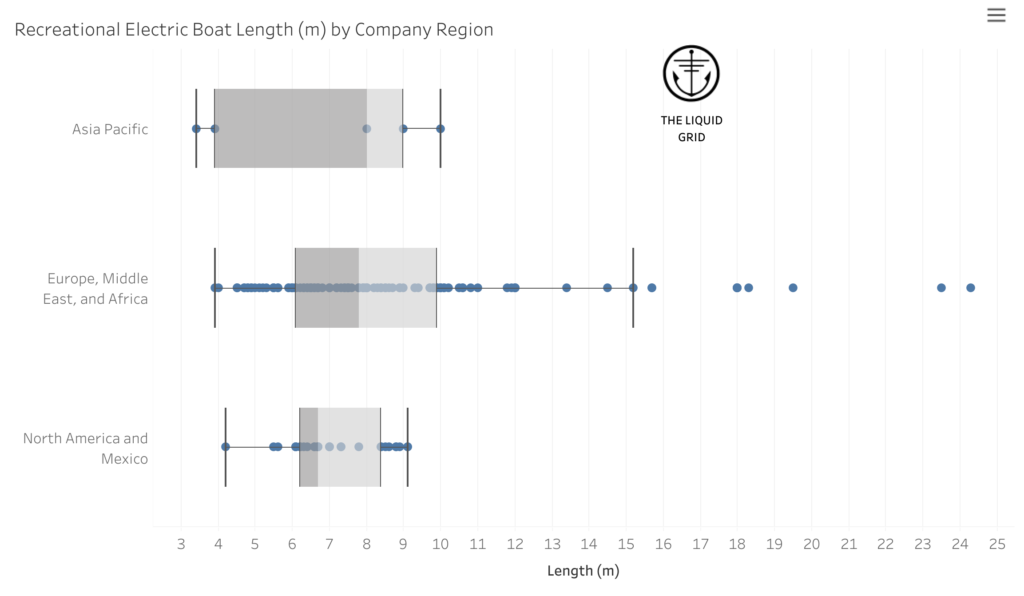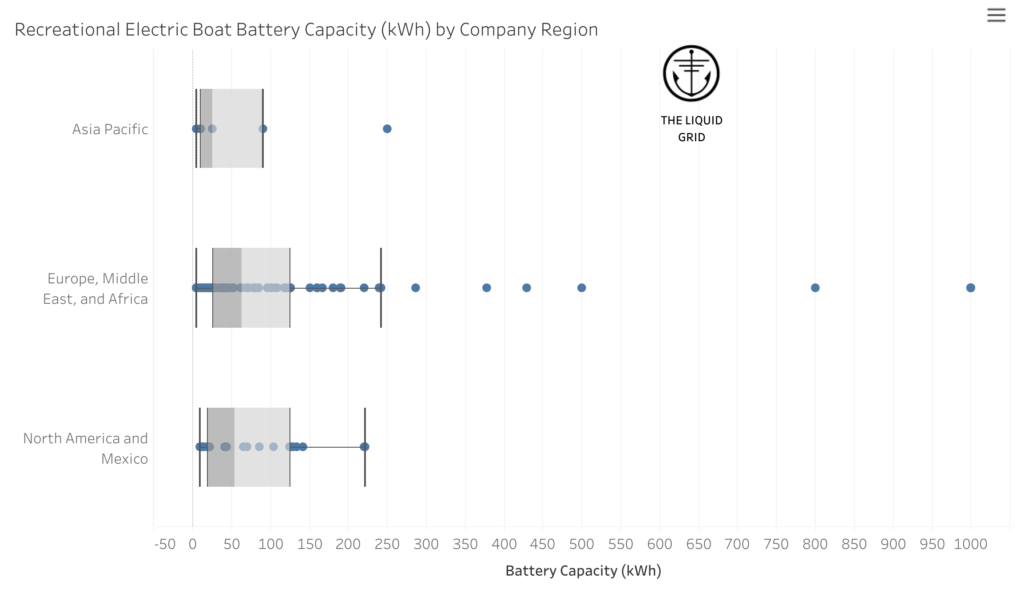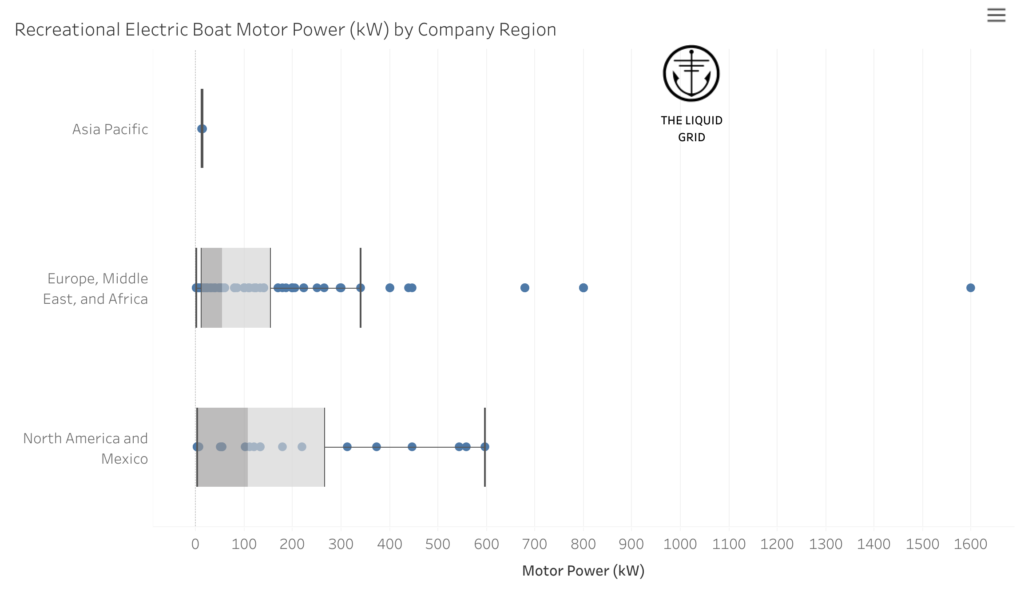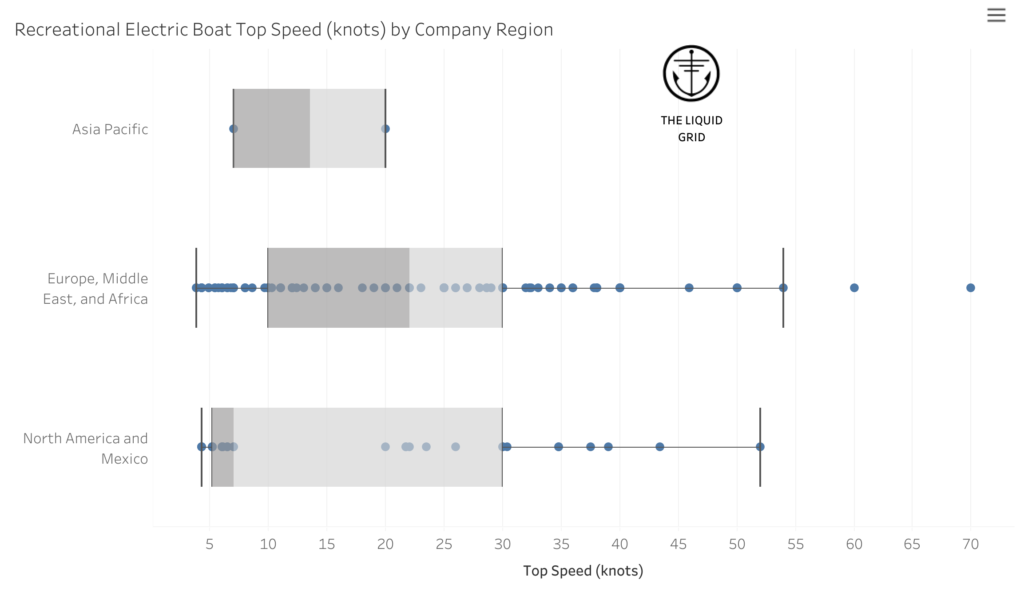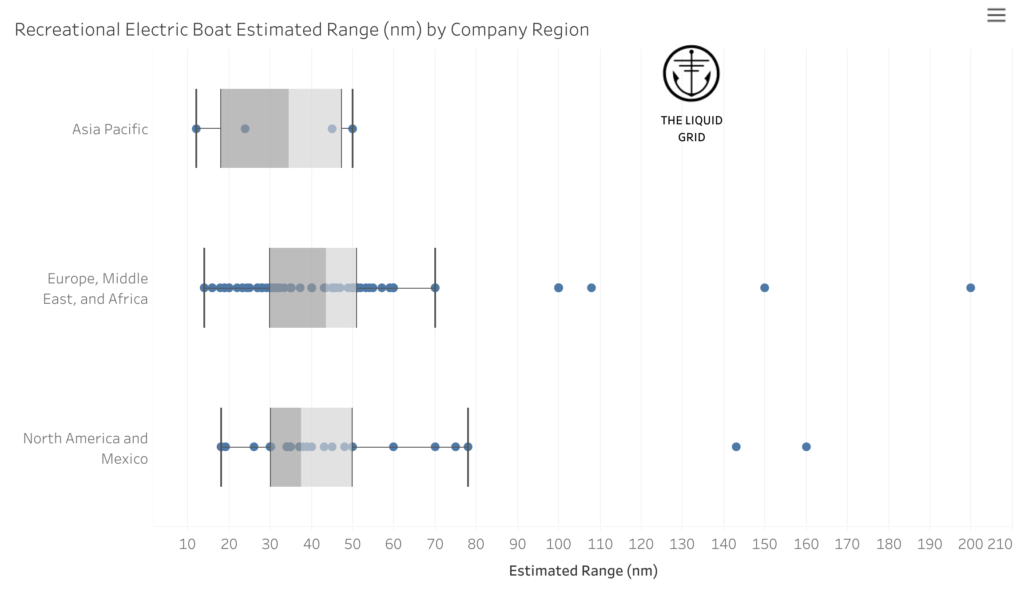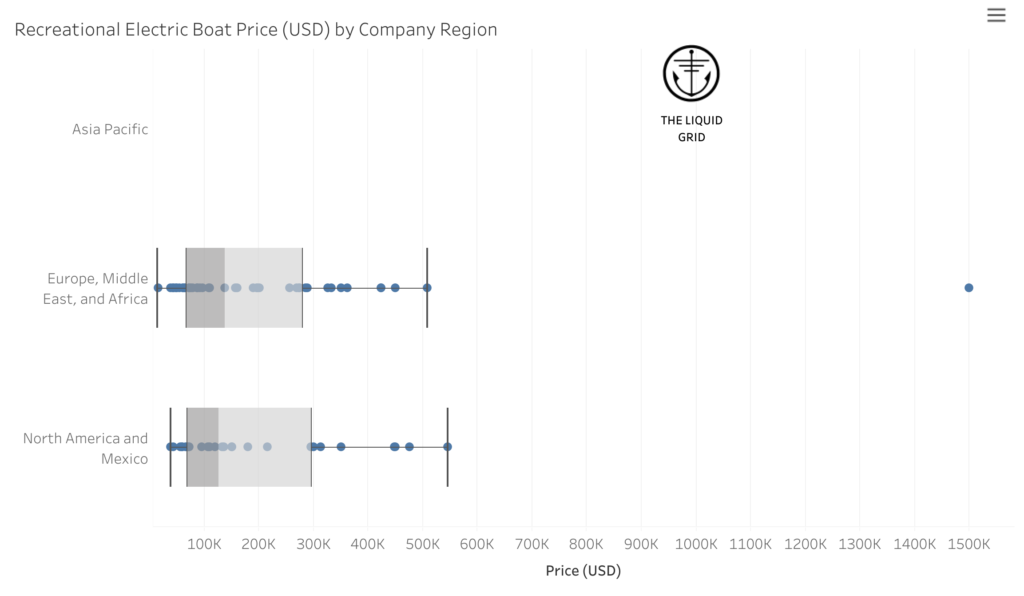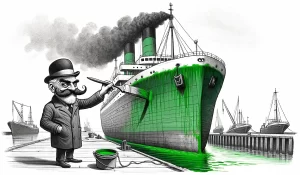There are around 11 million motorized recreational boats in the United States, which in total emit approximately 13.6 million metric tons of CO2 emissions each year for aquatic joyrides. With such a large market and even greater emissions, it’s no wonder there are so many new companies producing recreational electric boats. The Liquid Grid collected data on 110 companies and 190 different types of electric boats to understand the landscape. Take a look for yourself at the summary data in the interactive charts below.
Authors note: The Liquid Grid does not have any investment in any of the companies listed, nor does it receive a commission for any links to their sites. The appearance of a company on this page does not serve as an endorsement of the company or the technology.
Electric Boat Companies
As of 2023, there more than three times as many companies in the European region producing recreational electric boats as there are in the United States and Canada. Interestingly, by one estimate there are almost twice as many recreational boats in the United States (~11 million) as there are in Europe (~6.5 million). Keep in mind that the location of a company does not prevent them from selling into other markets.
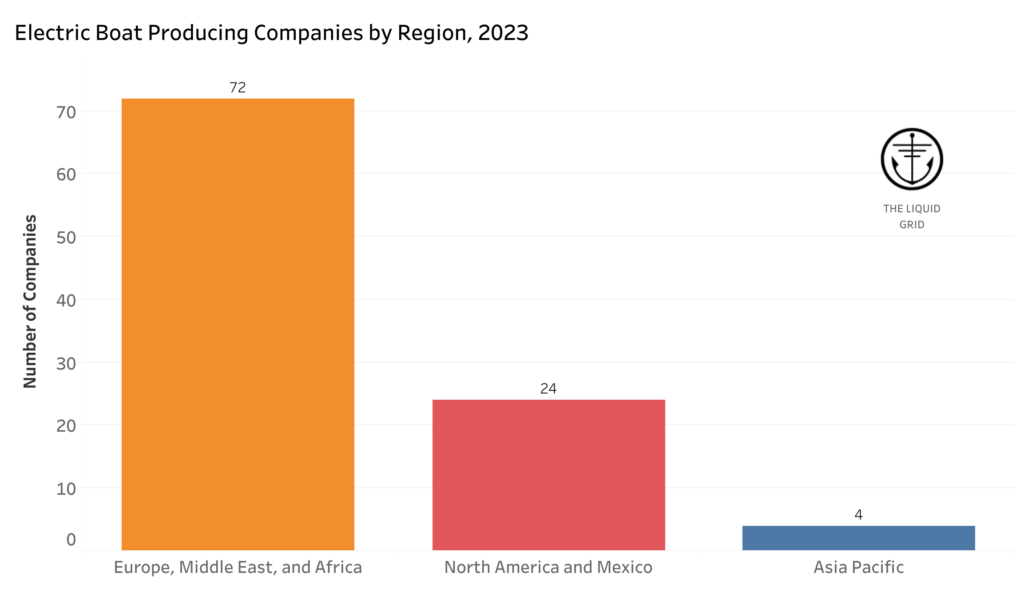
Company Data
The interactive chart below has around 110 companies that manufacture electric boats for recreational purposes. It does not include boat dealers, companies that only make electric motors or battery packs. It also does not include companies that only produce personal watercraft such as motorized surfboards or jetskis. Check out Plugboats to see those companies and more.
While the concept of an electric boat has been around for more than a century, it is only recently that advances in battery technology have made them more appealing. Some are old boat builders that have been around for decades, others are new entrants into the market with more novel hull designs. The data visualization below (not visible on mobile browsers) shows the more recent entrants in the electric boat scene over the last twenty years. As can be seen, both Europe and the US saw a noticeable uptick in new companies starting from 2017, and a big jump in 2021. This growth is similar to that of electric vehicle sales.
Questions about the data or want to request an update? Drop us a note.
Electric Boat Data
The dataset below shows electric boat data compiled from a sample of 190 recreational electric boats. It includes boats of various hull forms (monohull, catamaran, etc.), lengths, power ratings, materials, and even some foiling boats. While the full dataset includes some hybrid boats, those have been excluded from the charts below for consistency in analysis. Visualization is not available on mobile devices.
Principal Dimensions
Principal dimensions include measurements like length, breadth, draft, and weight. Shown below is the variation in electric boat lengths for different regions for recreational boats less than 30 meters. Median length is between six and eight meters. US and Canada tend to have slightly shorter boats than those in Europe.
You can explore more dimensions in the interactive chart above
Energy
There is little variation in the median energy storage capacity by geographic region. Both North America and Europe tend have a median battery capacity between 50 and 70 kWh, about the same as the Tesla Model 3 battery pack. However, energy storage requirements are a function of range and speed of the vessel.
You can explore more dimensions and how they relate to each other in the interactive chart above
Power and Speed
Power and speed are directly related. For both power and speed there exist regional differences for electric boats. Boats in North America have a median electric motor size that is twice that of Europe.
Note that this dataset includes planing and non-planing hulls, as well as foiling boats. For planing hulls, they are designed to glide atop the water at a certain speed, and the relationship between speed and power changes once the boat is planing. For foiling boats, the main hull lifts out of the water at a certain speed and is supported by attached hydrofoils, or wings. A foiling vessel encounters significantly less drag, and thus uses less power for propulsion, once on foil.
You can explore more dimensions and how they relate to each other in the interactive chart above
Range
Every form of motorized transportation is limited in the distance or duration it can travel due to the energy it must carry to propel itself. Most often this energy comes from hydrocarbon fuels like gasoline or diesel. Such fuels are energy dense, a little goes a long ways. Electrochemical energy storage in batteries does not provide the same energy density as hydrocarbon fuels, which means electric boats tend to have less range than their fossil fuel counterparts.
The distance, or range, of electric boats depends on many factors, such as battery capacity, speed, hull shape, and weather conditions. Therefore when an electric boat manufacturer provides a distance by itself, it is not very useful. At the very least we need to know the range at a given speed with a specified motor and battery capacity, see efficiency section below. Nevertheless, median range is around 40 nautical miles, slightly higher median value for Europe.
EFFICIENCY
Unlike the EPA’s assessment passenger vehicles, there is no standard assessment that electric boat manufacturers use to compare performance. This makes it challenging to compare one electric boat to the next. One might go 300 nautical miles at 5 knots, while another does 30 nautical miles at 50 knots. But were the test conditions the same? How do we know which is more efficient?
We can normalize range to the total battery capacity, and then we can compare these ratios at the rated speeds provided by the manufacturers. It’s not perfect, but it’s a more fair comparison than just range. See the interactive chart below, hover your mouse over each point to see the company and boat name.
Notice how efficiency and speed are inversely related. However there is a small increase in efficiency at around 20 knots, this is likely due to boats that plane or use hydrofoils. As noted above, a planing hull uses less power once at the appropriate speed to glide atop the water instead of plowing through it. Increases beyond planing speed become less efficient for planing hulls. Foiling boats literally lift out of the water entirely. Arc One stands as an outlier despite not using a foil, achieving a high efficiency a one of the fastest cruising speeds.
At reasonable cruising speeds above 15 knots, efficiencies above 0.5 nm/kWh seem to be stand-outs. For context the Boston Whaler Vantage 210 with a 112 kW gas outboard engine has a range efficiency of less than 0.1 nm/kWh at planing speeds using the EPA conversion factor of 33.7 kWh per gallon of gasoline.
Price
Recreational electric boats can be purchased for as little as $15,000, but if you want speed, comfort, and luxury it will cost a pretty penny. The median price in both North America and Europe is approximately $130,000 USD. Note that there are several boats that cost more than half a million dollars, and one at a cool $1.5 million.
Looking at prices globally, the median price increases with increasing top speeds for boats. Filtering on those boats with top speeds of at least 20 knots, the median price more than doubles to $270,000.

